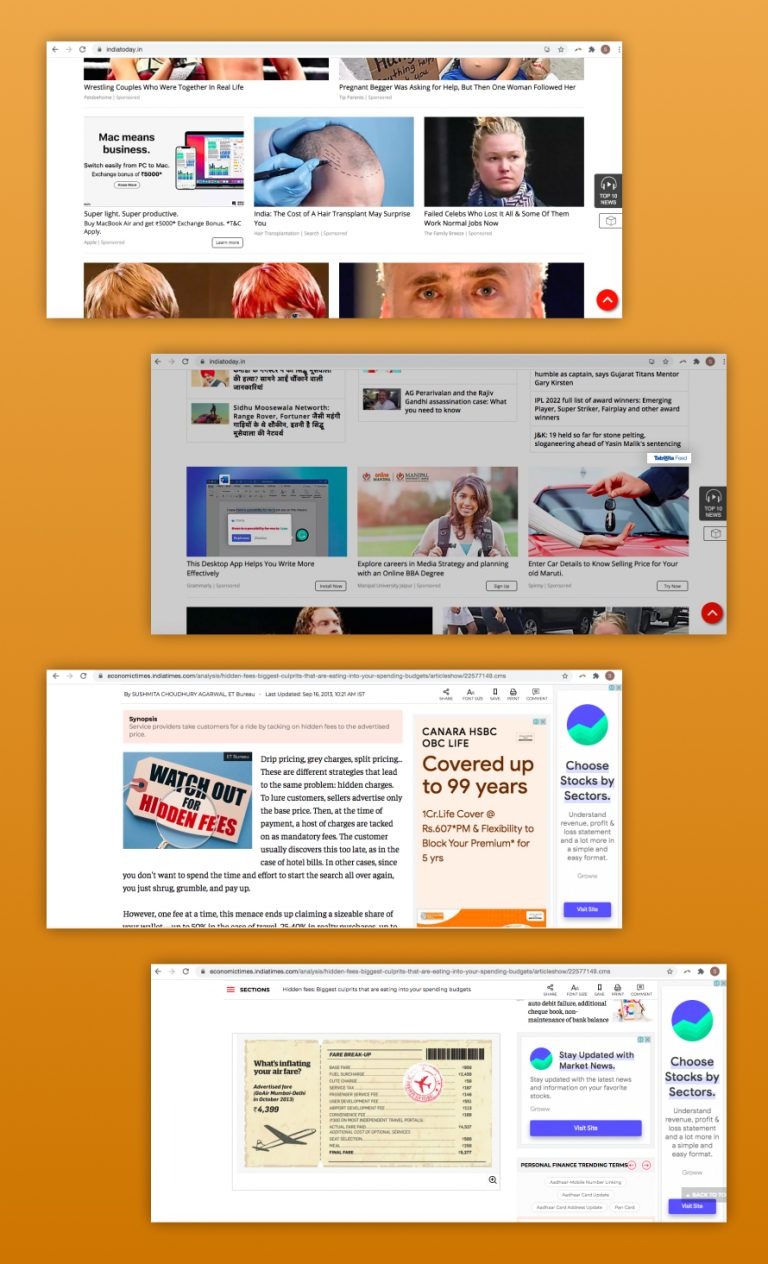Disguised ads are adverts, advertorials, or sponsored content that resemble the look and feel of other content on a webpage and that are designed to get users to click on them.
Stuti Mazumdar & Symran Bhue - June 2022

How this pattern gets its name?
This dark pattern gets its name from the way the ads have been disguised as part of the rest of the content on the webpage. Disguised ads are designed in such a way that on browsing casually, a user may not be able to quickly spot the disguised ads and may end up clicking on them unknowingly.
How to identify this pattern?
This kind of dark pattern is deceptive. The metric being prioritized is clicks (websites are paid per click), downloads, or traffic directed to other websites from the ad host sites.
With close attention, disguised ads can be identified by spotting an ‘x’ at the top right corner of a content window which is not the case with the rest of the content on the webpage. Sometimes, this dark pattern is also implemented in the form of native advertising which can be distinguished by spotting the word ‘sponsored’ somewhere in the ad content window.
Examples
This kind of dark pattern is found on news websites, digital magazines, blogs, and other web pages where informational content is disseminated. We’ll look at two kinds of examples for this dark pattern – one, in its purest form of disguised ads where it is not clearly evident that the ad is disguised into the webpage unless one notices the ‘x’ on the top right corner; Two, in the form of native advertising where again for an undiscerning user it could get confusing whether they are looking at something which is part of the content on the web page until they notice that the content is ‘sponsored’.
The Economic Times is an Indian English-language business-focused daily newspaper. It is owned by The Times Group. On visiting the Economic Times website, we see plenty of Google Ads which are not explicitly mentioned anywhere but one becomes aware of them as soon as we spot the ‘x’ in the top right corner of the ad.
India Today is an Indian English-language news magazine published by the Living Media India Limited. On visiting the India Today website, we notice Taboola Feed which looks exactly like the rest of the site. This is native advertising. Taboola is a content discovery and native advertising platform.

How to make it an ethical design pattern?
Disguised Ads aid publishers to monetize content on their website; however, in the long run, it affects their relationship with their readers in a negative way. Designers play an important role in creating a long-term relationship between the publisher and the readers through great design. And so it is significant for designers to steer clear of malpractices in design.
Sometimes it becomes difficult to completely avoid advertising, but what designers can do is clearly define a separate space where adverts can be placed on a website. Another effective way to place ads interspersed with content is to explicitly label them so as to avoid any confusion on the part of the users.
As long as the users are able to tell adverts apart from the regular content they are consuming, the users wouldn’t mind returning to content websites despite advertising. Finally, no form of advertising should allow disrupting a good user browsing experience on a website. So, advertising should be placed sensibly and uninterferingly on any website.




